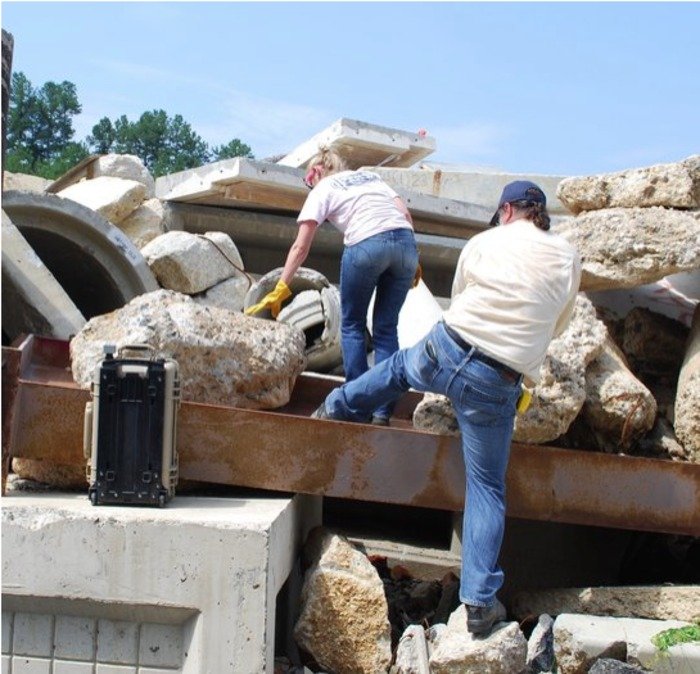During a test at a Virginia training facility, Rachel Horwitz of the Department of Homeland Security and Jim Lux of Jet Propulsion Laboratory used the FINDER device to locate the heartbeats of volunteer "victims" in the debris. Credit: John Price/Department of Homeland Security
PASADENA, Calif., Oct. 1 (UPI) -- NASA engineers say a device to detect heartbeats in the rubble of collapsed buildings was built with technology typically used to explore other planets.
The FINDER device, or Finding Individuals for Disaster and Emergency Response, was developed with the Department of Homeland Security to help search-and-rescue teams find survivors trapped underneath the wreckage, even victims who can't call for help.
Sometimes trapped victims can't be heard and using microphones to detect their voices requires their ability to call for help, researchers said.
"The other search technique relies on the victims making noise," FINDER manager Jim Lux said at NASA's Jet Propulsion Laboratory in Pasadena, Calif., told the Los Angeles Times. The JPL device "can find an unconscious and unresponsive victim," he said.
FINDER sends out a low-powered microwave signal toward the rubble, and while some of the signal bounces off of the rubble, some of it manages to penetrate the debris and bounce off of trapped victims.
Even an unconscious victim is actually moving rhythmically, the researchers said, as the chest rises and falls as the victim breathes and moves from heartbeats. Those nearly imperceptible movements create slight differences in timing when the microwaves bounce back, which the device can pick up.
To differentiate a signal from heartbeats and breathing from other random movements, the system uses a technique called signal processing, the same process radio astronomers use to identify individual pulsars from all the background noise, or to decipher a faint wobble in the signal from a spacecraft around Jupiter or Saturn.
In a test in the rubble of a collapsed building in Virginia, where volunteer victims had earlier crawled into the wreckage, FINDER picked up the signal of all four volunteer victims, Lux said.















